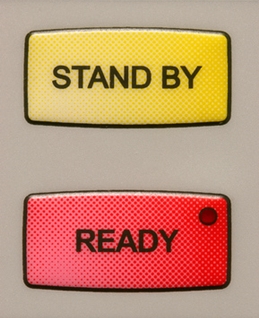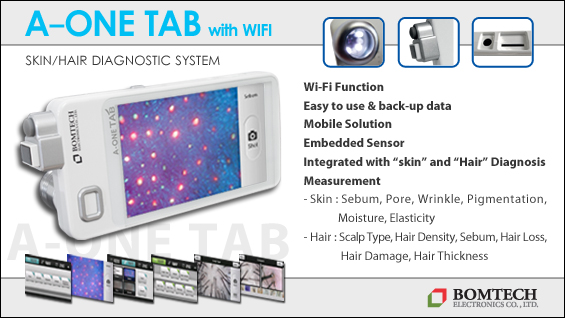1. Early Dye Laser Studies
Tunable Dye Laser (577nm) treatment of port-wine stains. Morelli JG, Tan OT, Garden J, Margolis R, Seki Y, Boll J, Carney JM, Anderson RR, Furumoto H, Parrish JA. Lasers Surg Med. 1986;6(1):94~9.
This is one of the early studies which showed the possibility of treating nevus flammeus without side effects, unlike other previous lasers. All those people who played important roles in the early development stage of medical lasers participated in this study. The wavelength (577nm) and pulse duration (300us) was slightly different from current parameters, but the good clinical effect deserves attention.
The treatment of port-wine stains by the Pulsed Dye Laser. Analysis of pulse duration and long-term therapy. Garden JM, Polla LL, Tan OT. Arch Dermatol. 1988 Jun;124(6): 889~96.
577nm Pulsed Dye Laser was used for two types of lasers with different pulse width (20us or 360us), and the study reported that the laser with 360us proved better effect. Given that most of the subjects were adult patients with nevus flammeus, the result might seem reasonable. As mentioned earlier, the blood vessels comprising nevus flammeus becomes thicker with age, and theoretically requires longer pulse duration, as reflected in the results of this study. This study still uses different parameters than current lasers, however. Minor side effects (epidermal change, depression and pigmentary change) were detected in a small number of patients, scar was not observed as was the case in previous lasers.
[Advertisement] A-One Tab with Wi-Fi(Skin/Hair Diagnostic System) – Manufacturer: BOMTECH(www.bomtech.net)
2. Early Clinical Studies
Treatment of children with port-wine stains using the flashlamp pulsed tunable Dye Laser. Tan OT, Sherwood K, Gilchrest BA. N Engl J Med. 1989 Feb 16; 320(7): 416~21.
In this study, 35 children aged between 3 months to 14 years with nevus flammeus was treated. Although the study has some controversies, it provided a lot of significant information. Among the 35 patients, treatment was less frequent among younger patient group, and the lesion was completely cleared in all patients. Given the fact that it is practically impossible to achieve 100% clearance by using currently available Pulsed Dye Laser for nevus flammeus in children, one might wonder whether the laser used in this study (577nm, 360us laser) could have brought about better results in younger children, because with more superficial and thinner blood vessels in the nevus flammeus of these patients, are less affected by the penetration depth.
585nm for the treatment of port-wine stains. Tan OT, Morrison P, Kurban AK. Plast Reconstr Surg. 1990 Dec; 86(6): 1112~7.
This study reported that 585nm, rather than 577nm, produced better results for nevus flammeus in adults. This study is meaningful in that it highlighted the importance of penetration depth of each wavelength, as well as the selective photothermolysis theory, for the treatment of vascular lesions. It is quite amazing that merely 7nm difference could bring about such a different clinical result. Unfortunately, however, the result may be different for flat pink nevus flammeus in infants and 577nm laser is not on the market anymore. So many different lasers or devices are required to obtain the best results at all times for all patients with vascular lesions. This is the problem that clinicians face every time. Clinicians who did not obtain a sufficient number of devices might even become morally insensitive to the incapability of delivering the optimal treatment. For example, one might feel guilty when a doctor has to treat a lesion requiring 2 different devices, but he uses only 1 device; howeve doctors often would not make an issue of using only 2-3 devices for a vascular lesion requiring 10 different devices, because it was an as difficult lesion as requiring 10 devices from the beginning. The fact that vascular lesions would require so many lasers or devices may thus accompany ethical issues.
Effect of the timing of treatment of port-wine stains with the flashlamp pumped Pulsed Dye Laser. van der Horst CM, Koster PH, de Borgie CA, Bossuyt PM, van Gemert MJ. N Engl J Med. 1998 Apr 9;338(15):1028~33.
Although this is not one of early studies, this is a prospective study comparing effects per age among a large number of patients, rendering it the most systematic study. The results concluded that the effect was not different among age groups, which is conflicting with other studies or clinical experiences. I personally think that such different result might be explained by the following three reasons:
First, the patients in this study were not grouped according to the color or type of their nevus flammeus.
Second, the study appears to have treated patients using a very common method (585nm, 0.45ms pulse width and 5mm spot size), but children were treated in sections which means they left untrated area always.
Third, the lesion was cooled down with gauze soaked in ice water throughout the course of the treatment. Nevus flammeus in adults resides thick and deep in the skin that it is highly unlike that slightly strong cooling of the skin might interfere with the heating of the blood vessels. In children, however, blood vessels are located superficially and bulk strong cooling may easily cool down the target blood vessels. Furthermore, continuous cooling with gauze soaked in ice water may yield a completely different phenomenon than the skin cooling by DCD or cold air. The authors and reviewers of this study made a mistake to overlook such facts. Another factor that might distort the result is the fact that hypertrophic type was unusually more common among the children in this study.
3. From 585nm To 595nm
Wavelengths for Laser treatment of port-wine stains and telangiectasia. van Gemert MJ, Welch AJ, Pickering JW, Tan OT, Gijsbers GH. Lasers Surg Med. 1995;16(2):147~55.
This study used modeling to analyze the most optimal wavelength for the treatment of nevus flammeus and telangiectasia and concluded that 577-582nm was best for nevus flammeus in children and that argon laser could be more suitable for purple nevus flammeus in adults. 578nm Copper Vapor Laser or 532nm KTP Laser was appropriate for nevus flammeus with a small or moderate number of blood vessels. Another interesting result was that the lesser the spot size, the more the optimal wavelength shifted toward 577nm. This study was performed at a time when various wavelengths were attempted, and 595nm appeared later considering the penetration depth.

4. The Beginning of Skin Surface Cooling
Effect of dynamic cooling on 585nm Pulsed Dye Laser treatment of port-wine stain birthmarks. Waldorf HA, Alster TS, McMillan K, Kauvar AN, Geronemus RG, Nelson JS. Dermatol Surg. 1997 Aug;23(8):657~62.
This study compared between the presence and absence of precooling using 585nm Dye Laser with dynamic cooling device. The precooling was found to reduce pain and epidermal change and to contribute to a better therapeutic effect by raising the threshold of fluence for side effects. These results would seem natural since most lasers are equipped with a cooling system using cold air or DCD, but introducing skin surface cooling system for vascular treatment was one of major steps of development. Sometimes turning off the cooling system could be helpful when treating superficial nevus flammeus in newborn infants with white skin since the cooling system might even cool down the target.
5. Pulse Duration Requires Milisecond rather than Microsecond
Thermal relaxation of port-wine stain vessels probed in vivo: the need for 1-10-millisecond Laser pulse treatment. Dierickx CC, Casparian JM, Venugopalan V, Farinelli WA, Anderson RR. J Invest Dermatol. 1995 Nov;105(5):709~14.
Although this might seem trivial now, this study investigated two laser pulses with some interval, which was one of unusual methods. When the ideal pulse duration for selective damage of blood vessels in nevus flammeus was calculated, 1-10ms pulse duration was found as necessary. This result implicates that the pulse duration had to be longer for previously marketed lasers.
6. Introduction of Various Long Pulse (ms) Lasers and IPL
Treatment of port-wine stains with a noncoherent pulsed light source: a retrospective study. Raulin C, Schroeter CA, Weiss RA, Keiner M, Werner S. Arch Dermatol. 1999 Jun;135(6):679~83.
In this retrospective study, 28 patients were fully recovered among 40 patients who were treated with 2.5-5.0ms, 24~60J/cm2, 515nm and 550nm cut-off filter. Blister, crust and pigmentation were observed in 8%, 20% and 10.8%, respectively. 11 had response out of 12 patients with previous experience of treatment, although half the meaning of the result was lost because not only the patients who were treated by standard Dye Laser but also those treated by argon laser were included in large numbers. Patients had better results when their lesion was pink or light colored. This was a good study showing that IPL could be available for vascular treatment, but more frequent occurrence of side effects than Dye Laser cannot be ignored.
Treatment endpoints for resistant port-wine stains with a 755nm Laser. Izikson L, Anderson RR. J Cosmet Laser Ther. 2009 Mar;11(1):52~5.
This study treated nevus flammeus resistant to Pulsed Dye Laser based on the fact that 755nm penetrates deeper than 585nm or 595nm. It is interesting that the study used 755nm, rather than 1064nm with possibly similar effect, because 755nm absorbs less to HbO2 and less likely to affect deep artery, making it safer for nevus flammeus. According to the main objective of affecting deeper blood vessels, this study was creative in that it used surface cooling more actively, with intervals between shots to prevent bulk heating before starting another procedure again. 755nm treatment guideline for transient gray color that gradually evolves into persistent deep purpura would be worth remembering for clinicians treating nevus flammeus in adults.
Combined 595nm and 1064nm Laser irradiation of recalcitrant and hypertrophic port-wine stains in children and adults. Alster TS, Tanzi EL. Dermatol Surg. 2009 Jun;35(6):914~8.
Unlike previous studies which treated nevus flammeus with 1064nm, this study irradiated 595nm and 1064nm with some time delay to determine additional effect on nevus flammeus resistant to other treatments. Various methods were attempted for patients resistant to Dye Laser, and such attempts often extend to the treatments of other vascular diseases. This study suggests the trend of introducing various treatments for other vascular lesions to nevus flammeus.
Pulsed Dye Laser vs. Intense Pulsed Light for port-wine stains: a randomized side-by-side trial with blinded response evaluation. Faurschou A, Togsverd-Bo K, Zachariae C, Haedersdal M. Br J Dermatol. 2009 Feb;160(2):359~64.
500-670nm and 870-1400nm, 5-10ms IPL and 595nm 0-45m or 1.5ms Dye Laser were compared for therapeutic effect on nevus flammeus, and Dye Laser was found as more effective. Despite using uncommon filter for IPL, this study confirmed again the fact that Dye Laser + epidermal cooling is the standard of nevus flammeus treatment. Approximately 30-150um blood vessels are distributed from the skin surface throughout various depths in nevus flammeus, making it stand out easily as the target of selective damage in the development history of skin laser therapy and thus as the basics among various studies on laser therapy. It is recommendable that clinicians study about treating vascular lesions even if they don’t have a plan to treat a capillary malformation.
Lastly, the following sentence in the dermatology textbook by Graeme Lipper and Rox Anderson has a lot of implications:
“A ‘cookbook’ approach to the treatment of PWSs should be discouraged, and Laser parameters and cryogen spray settings must be tailored to each individual.”
- To be contonued -
▶ Previous Artlcle : #3. Development of Vascular Laser Ⅱ-1
▶ Next Artlcle : #5. Development of Vascular Laser Ⅲ





















